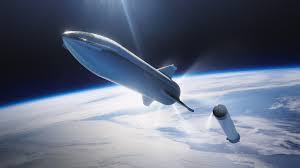
Breaking News
 Candace Owens Reacts to Erika Kirk's Interviews and Comments about Questioning TPUSA
Candace Owens Reacts to Erika Kirk's Interviews and Comments about Questioning TPUSA
 Bank of America just leaked their report to institutional clients.
Bank of America just leaked their report to institutional clients.
 IDEAL HUB TO KICK OFF THE GRAND PLAN: BIRTH OF "USAMERICAS"
IDEAL HUB TO KICK OFF THE GRAND PLAN: BIRTH OF "USAMERICAS"
 Why It's Cheaper to Abandon This Container
Why It's Cheaper to Abandon This Container
Top Tech News
 This tiny dev board is packed with features for ambitious makers
This tiny dev board is packed with features for ambitious makers
 Scientists Discover Gel to Regrow Tooth Enamel
Scientists Discover Gel to Regrow Tooth Enamel
 Vitamin C and Dandelion Root Killing Cancer Cells -- as Former CDC Director Calls for COVID-19...
Vitamin C and Dandelion Root Killing Cancer Cells -- as Former CDC Director Calls for COVID-19...
 Galactic Brain: US firm plans space-based data centers, power grid to challenge China
Galactic Brain: US firm plans space-based data centers, power grid to challenge China
 A microbial cleanup for glyphosate just earned a patent. Here's why that matters
A microbial cleanup for glyphosate just earned a patent. Here's why that matters
 Japan Breaks Internet Speed Record with 5 Million Times Faster Data Transfer
Japan Breaks Internet Speed Record with 5 Million Times Faster Data Transfer
 Advanced Propulsion Resources Part 1 of 2
Advanced Propulsion Resources Part 1 of 2
 PulsarFusion a forward-thinking UK aerospace company, is pushing the boundaries of space travel...
PulsarFusion a forward-thinking UK aerospace company, is pushing the boundaries of space travel...
 Dinky little laser box throws big-screen entertainment from inches away
Dinky little laser box throws big-screen entertainment from inches away
 'World's first' sodium-ion flashlight shines bright even at -40 ºF
'World's first' sodium-ion flashlight shines bright even at -40 ºF
SpaceX Super Heavy Starship 2.0 Will Be 8 Times Bigger Than Super Heavy Starship

This would mean the area of the cross-section would be 4 times higher. If the height was also doubled then it would have 9 times the volume. The engines would likely be upgraded for the Ultra Heavy Starship 2.0. This means the next rocket might be able to launch over 1000 tons per launch.
This would be about twice the payload of the Sea Dragon. The Sea Dragon was a 1962 conceptualized design study for a two-stage sea-launched orbital super heavy-lift launch vehicle. The project was led by Robert Truax while working at Aerojet. It would have had a payload capacity of 550 tons. It would have been 150 meters tall and 23 meters in diameter.
The SpaceX Super Heavy Starship 2.0 may also be limited on height. Tovera Vashini on twitter notes that rocket height is limted by thrust per area. This could mean that SpaceX Super Heavy Starship 2.0 may also end up very near the Sea Dragon in capacity.
In 2016, SpaceX had a 12-meter diameter ITS rocket design. It was designed to launch 300 tons to orbit and with refueling could launch 450 tons to Mars.



